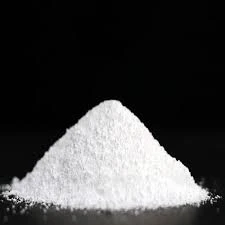4-Bromobenzotrifluoride A Versatile Compound in Organic Chemistry
4-Bromobenzotrifluoride (often abbreviated as 4-BBTF) is an aromatic compound that has garnered interest in the field of organic chemistry due to its unique structural features and diverse applications. Bearing both bromine and trifluoromethyl groups, this compound exemplifies the versatility of halogenated aromatics and serves as a building block for numerous chemical syntheses and industrial processes.
Structural Overview
The molecular structure of 4-bromobenzotrifluoride consists of a benzene ring substituted with a bromine atom at the para position and three fluorine atoms attached to the same ring, specifically at the meta positions relative to the bromine substituent. This arrangement leads to a compound that is not only interesting from a synthetic point of view but also exhibits unique physical and chemical properties due to the presence of strong electron-withdrawing groups (the trifluoromethyl group).
Properties and Reactivity
4-Bromobenzotrifluoride is characterized by its relatively high stability thanks to the strong carbon-fluorine bonds inherent to the trifluoromethyl group. As a halogenated aromatic compound, it shows moderate polarity which influences solubility in various organic solvents. Its boiling point and other physical attributes make it suitable for various applications, including its use as a solvent in organic reactions.
The presence of both bromine and trifluoromethyl groups provides 4-BBTF with unique reactivity. The bromine atom acts as a good leaving group, making the compound a valuable intermediate in nucleophilic substitution reactions. Meanwhile, the trifluoromethyl group can impart distinct electronic properties that enhance the reactivity of adjacent functional groups. This duality makes 4-bromobenzotrifluoride a popular target for chemists working in synthetic methodology.
4-bromobenzotrifluoride

Applications in Synthesis
One of the most significant applications of 4-bromobenzotrifluoride is its role as a precursor in the synthesis of pharmaceuticals and agrochemicals
. The compound can be transformed into various derivatives through different reaction pathways, such as nucleophilic aromatic substitution or cross-coupling reactions. The bromine atom can be replaced with a range of nucleophiles, enabling the formation of numerous functionalized aromatic compounds.In addition to pharmaceutical applications, 4-BBTF is also employed in material science, particularly in the development of specialty polymers and advanced materials. The trifluoromethyl group is known for its ability to impart hydrophobic properties, increasing the thermal and chemical stability of materials. This makes 4-bromobenzotrifluoride an important component in the formulation of coatings, adhesives, and other polymer systems.
Environmental Considerations
Despite its usefulness, the presence of halogens in 4-bromobenzotrifluoride raises environmental concerns. Halogenated compounds have been scrutinized due to their potential impact on human health and the environment. As such, the development of greener synthetic methodologies and the increased regulation of hazardous materials are critical areas of ongoing research. Chemists are now striving to adopt safer practices, such as using alternative solvents and reagents that minimize ecological impact.
Conclusion
4-Bromobenzotrifluoride stands out as a significant compound in the field of organic chemistry, bridging the gap between fundamental research and practical applications. Its unique structure, reactivity, and versatility make it a valuable building block for synthesizing a multitude of useful chemicals. As the scientific community continues to innovate, exploring safer and more sustainable approaches to utilizing such compounds will remain at the forefront of organic synthesis. The future may hold even more exciting developments for 4-bromobenzotrifluoride and its derivatives, further cementing its place in both academic and industrial settings.

